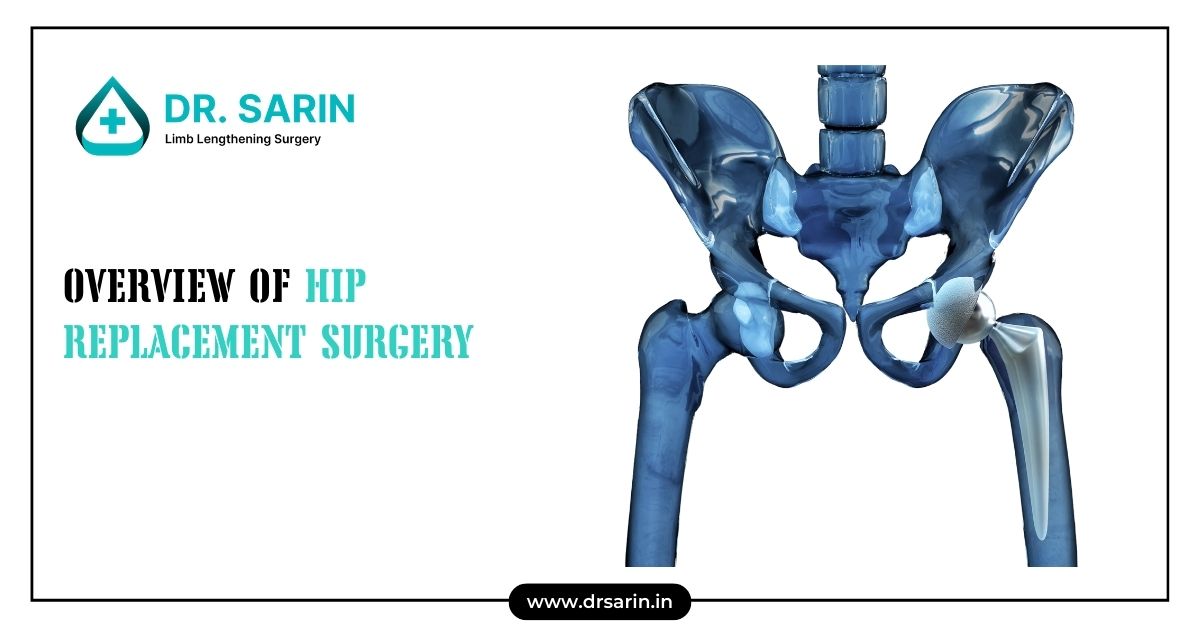Hip replacement surgery, also known as hip arthroplasty, is a common procedure aimed at relieving hip pain and improving joint function. This surgery involves removing the damaged sections of the hip joint and replacing them with artificial components, typically made from metal, plastic, or ceramic materials. Hip replacement is generally considered for individuals suffering from severe arthritis, hip fractures, or other degenerative joint conditions that affect their mobility and quality of life. By restoring the function of the hip joint, this surgery can allow patients to return to their everyday activities and significantly reduce their pain levels.
There are two primary types of hip replacement surgeries: total hip replacement (THR) and partial hip replacement. In a total hip replacement, both the ball (femoral head) and the socket (acetabulum) of the hip joint are replaced. Partial hip replacement typically involves replacing only the femoral head. The choice between these procedures depends on the extent of damage to the hip joint, the patient’s age, overall health, and activity level.
Why is Hip Replacement Surgery Needed?
Hip replacement surgery is typically recommended for individuals who experience chronic hip pain and limited mobility that doesn’t improve with non-surgical treatments such as physical therapy, medications, or injections. The most common reason for needing hip replacement is osteoarthritis, a degenerative joint disease that wears down the cartilage between bones, leading to pain and stiffness. Other conditions that may necessitate hip replacement include rheumatoid arthritis, hip fractures, avascular necrosis (a condition where the blood supply to the bone is reduced, causing the bone to die), and developmental hip dysplasia.
For many patients, hip pain can significantly interfere with daily activities such as walking, climbing stairs, and even resting. When hip joint deterioration begins to affect sleep, work, or basic movements, hip replacement surgery can offer a long-term solution. The surgery is designed to alleviate pain, restore range of motion, and improve overall function, allowing patients to lead a more active lifestyle.
Preparing for Hip Replacement Surgery
Preparation is a key factor in ensuring a successful hip replacement surgery and smooth recovery. Before the surgery, patients will undergo a thorough medical evaluation, which includes blood tests, X-rays, and a physical examination to ensure they are fit for the procedure. The surgeon may also suggest losing weight, quitting smoking, or engaging in a preoperative exercise regimen to improve overall health and muscle strength. This preparation can help to optimize the outcome of the surgery.
Patients should inform their medical team of any medications they are taking, as some drugs may need to be paused or adjusted before the surgery. Additionally, preparing the home environment for post-surgery recovery is important. Patients may need to arrange for assistive devices such as crutches, walkers, or grab bars in the bathroom. It’s also advisable to have a support system in place, as some assistance will be required for daily tasks during the initial recovery period.
What to Expect During Hip Replacement Surgery
During hip replacement surgery, patients are typically placed under general anesthesia, though in some cases, spinal or epidural anesthesia may be used. The surgery usually takes about 1-2 hours. In a standard procedure, the surgeon makes an incision over the hip and carefully removes the damaged bone and cartilage. The artificial joint components (prostheses) are then inserted to replicate the movement of a healthy hip joint. Depending on the type of surgery and the surgeon’s preference, either cemented or uncemented prosthetics may be used.
Minimally invasive techniques, which involve smaller incisions and less muscle disruption, have become more common and may result in quicker recovery times. After the surgery, patients will be moved to a recovery room where their vital signs are monitored. Most patients stay in the hospital for 1-3 days, but the recovery time varies depending on the individual’s overall health and the complexity of the surgery.
In the days following surgery, physical therapy will begin to help patients regain strength and mobility. Although full recovery can take several months, most patients experience significant pain relief and improved joint function within a few weeks of surgery. With proper care, a hip replacement can last 15-20 years, allowing individuals to enjoy a better quality of life for years to come.
You May Also Like to Read:



